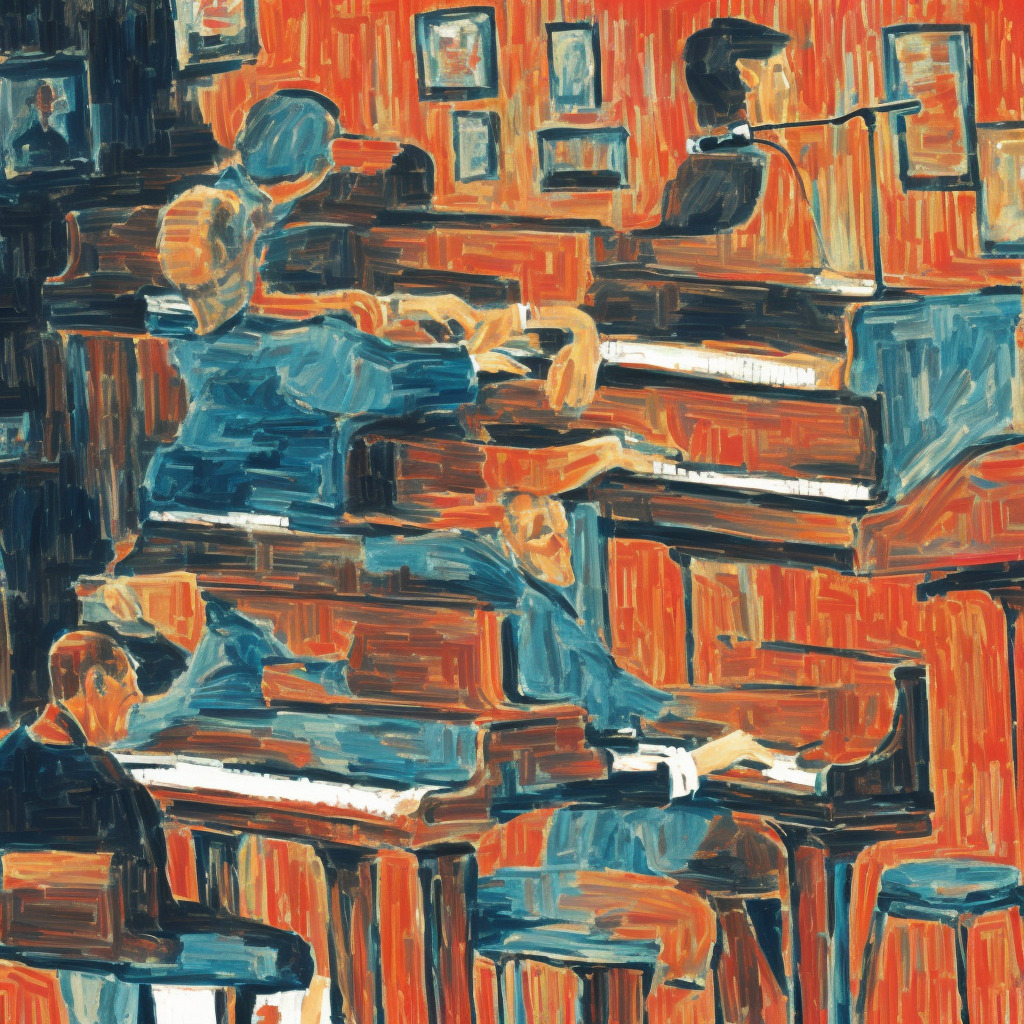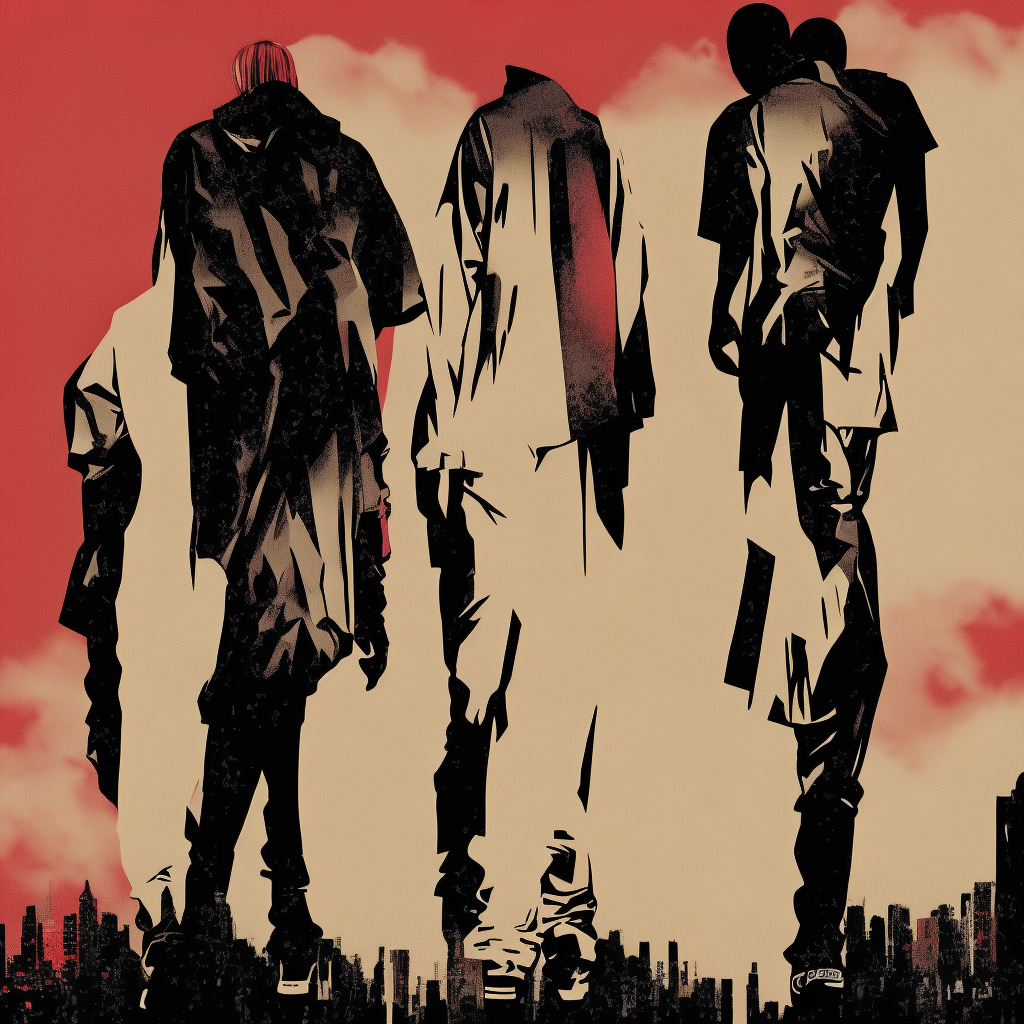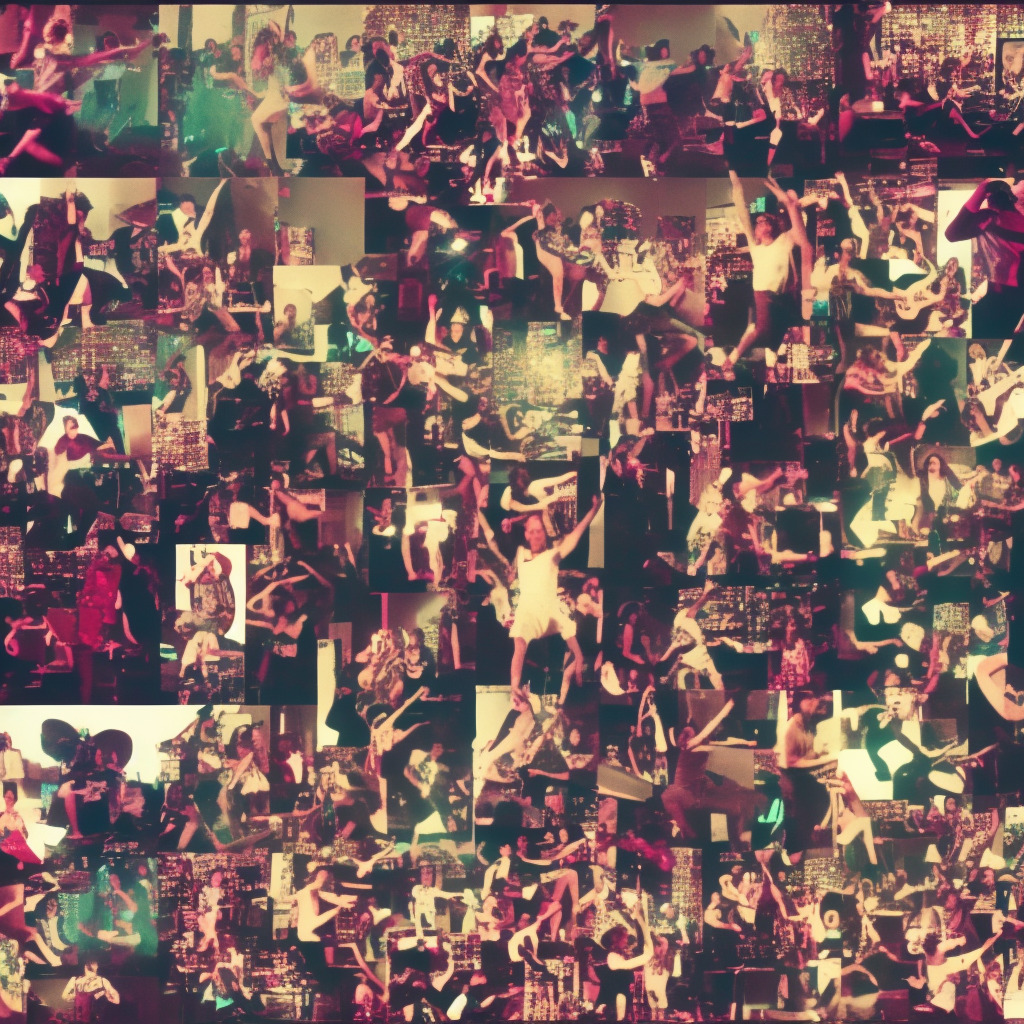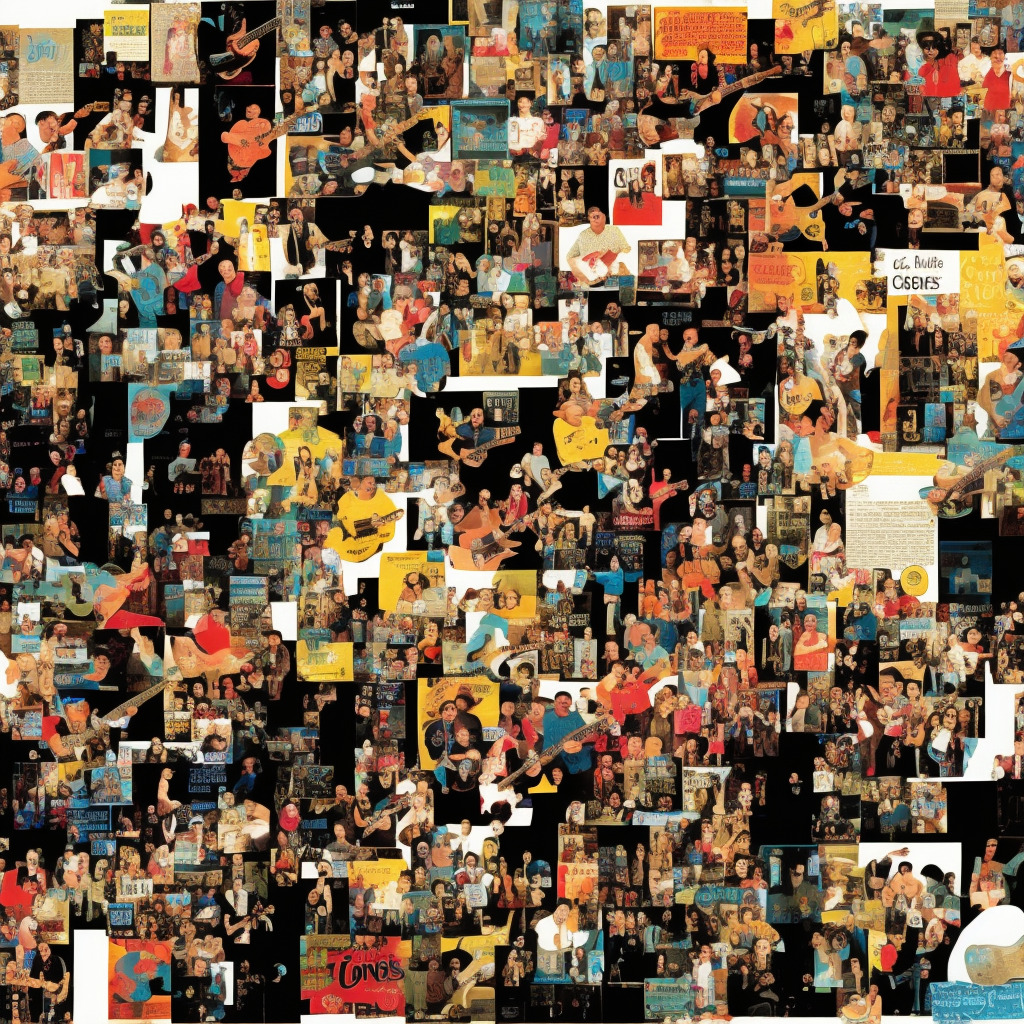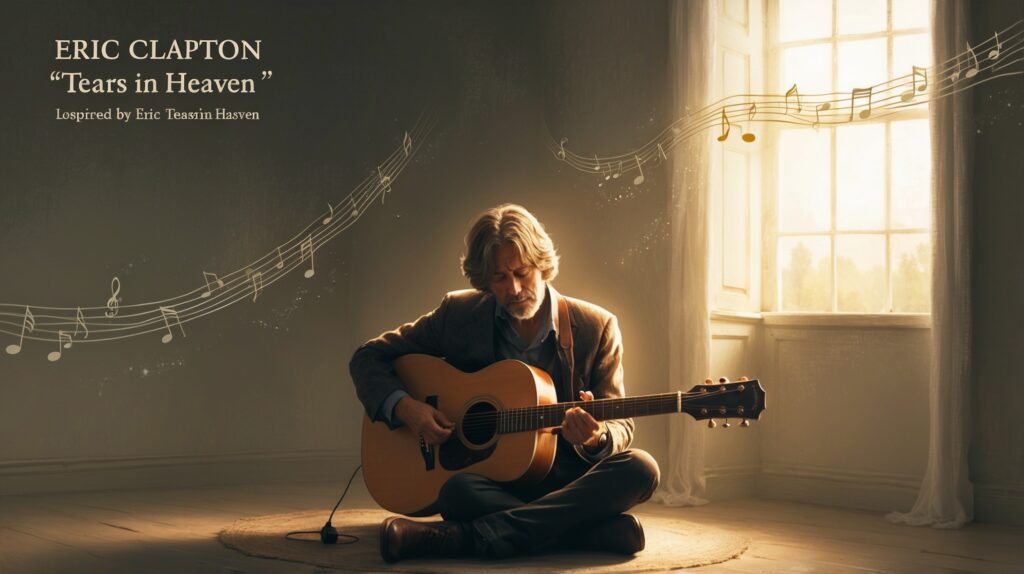🎶 Did you know #BillyJoel wrote “You May Be Right” after crashing his motorcycle? 🏍️ No wonder it’s a rockin’ anthem to risky living! 🎸🎤 Keep rollin’ Piano Man! 😎 #FunFact #YouMayBeRight #RockOn Read about it: tinyurl.com/2fb4zu73
Exploring the Depths of Billy Joel’s Genius with a Rock and Roll Classic
Dive into the timeless brilliance of Billy Joel’s rock anthem “You May Be Right,” capturing the perfect blend of rebellious spirit and vulnerable lyrics from the iconic Piano Man.

When it comes to discussing the oeuvre of rock legend Billy Joel, it’s impossible not to mention one of his signature songs, “You May Be Right.” Released in 1980 as part of his album Glass Houses, this rock anthem perfectly showcases the artist’s uncanny knack for blending catchy hooks with emotionally resonant lyrics. In fact, “You May Be Right” remains a mainstay in his repertoire, demonstrating once again that his songwriting prowess transcends the test of time.
Billy Joel, born William Martin Joel in 1949, gained recognition in the early 70s and has since captivated audiences with his powerful voice and masterful piano skills. Over the years, he has sold over 150 million records worldwide, making him one of the best-selling artists of all time. With a career that spans five decades, Joel has garnered countless awards and honors, including six Grammy Awards and a star on the Hollywood Walk of Fame. He was also inducted into the Songwriters Hall of Fame and the Rock and Roll Hall of Fame, solidifying his status as a true musical icon.
“You May Be Right” is an excellent example of Joel’s ability to write songs with a rebellious spirit, while maintaining a tinge of vulnerability in the lyrics. The memorable opening line, “Friday night I crashed your party,” sets the stage for a wild ride that explores themes of unpredictability and recklessness. The song’s infectious chorus and driving rhythm make it irresistible for fans to sing along, even if they secretly identify with the more tender-hearted sentiments in the song.
However, it’s important to acknowledge that not all aspects of Billy Joel’s career have been met with unanimous praise. For instance, some critics have pointed out his tendency to borrow heavily from other musical genres or specific artists, leading to debates about his originality. Additionally, his personal life has often been tumultuous, with a string of high-profile relationships and a well-documented struggle with substance abuse. These issues, however, do not negate the immense contributions Billy Joel has made to the world of music.
In conclusion, “You May Be Right” remains one of Billy Joel’s most enduring and beloved tracks. It serves as a testament to his talent as a songwriter, performer, and risk-taker. While there may be some valid criticisms of his work, it’s impossible to deny the impact he has had on the music industry and the countless fans who continue to find solace, joy, and inspiration in his songs. So, crank up the volume and let “You May Be Right” transport you back to a time when rock and roll ruled the airwaves, courtesy of the inimitable Piano Man himself.
Charting the Course of a Classic
Navigating the timeless journey of Billy Joel’s classic hit “You May Be Right,” from its 1980 chart triumphs to its enduring legacy in the world of classic rock.

Released as a single on March 12, 1980, “You May Be Right” by Billy Joel made its debut on the Billboard Hot 100 chart at position #73. The song started to gain traction and moved up the chart in the coming weeks, eventually peaking at #7 on May 10, 1980. It held its position in the Top 10 for three weeks, showcasing its popularity among the masses.
In addition to its success on the Hot 100 chart, “You May Be Right” also made an appearance on the Billboard Adult Contemporary chart, where it reached #34. It’s worth noting that the song simultaneously appeared on the charts in Canada as well, climbing up to #12 on the RPM Top 100 Singles chart during the same time period.
An interesting piece of chart trivia is that, despite not reaching the top spot on the Hot 100, “You May Be Right” was ranked #78 on the year-end Billboard Hot 100 chart for 1980. This demonstrates the song’s sustained popularity throughout the year, earning it a spot among the top hits of that time.
A testament to the song’s lasting appeal, “You May Be Right” continues to be a fan favorite and enjoys frequent airplay on classic rock radio stations. Its chart success serves as an important milestone in Billy Joel’s extensive discography and showcases the timeless nature of his music.
Delving into the Lyrics of a Classic
Friday night I crashed your party
Saturday I said I’m sorry
Sunday came and trashed me out again
I was only having fun
Wasn’t hurting anyone
And we all enjoyed the weekend for a change
I’ve been stranded in the combat zone
I walked through Bedford Stuy alone
Even rode my motorcycle in the rain
And you told me not to drive
But I made it home alive
So you said that only proves that I’m insane
You may be right
I may be crazy
But it just may be a lunatic you’re looking for
Turn out the light
Don’t try to save me
You may be wrong for all I know
But you may be right
Remember how I found you there
Alone in your electric chair
I told you dirty jokes until you smiled
You were lonely for a man
I said take me as I am
‘Cause you might enjoy some madness for a while
Now think of all the years you tried to
Find someone to satisfy you
I might be as crazy as you say
If I’m crazy then it’s true
That it’s all because of you
And you wouldn’t want me any other way
You may be right
I may be crazy
But it just may be a lunatic you’re looking for
It’s too late to fight
It’s too late to change me
You may be wrong for all I know
But you may be right
The lyrics of “You May Be Right” showcase a sense of spontaneity and individuality that reflects the spirit of the time when the song was released in 1980. Billy Joel tells a story of a rebellious protagonist who embraces his eccentricity and doesn’t shy away from expressing his true self. During this era, societal and cultural norms were shifting, with people challenging the traditional expectations that once governed their lives. This was also the time when rock and roll was at its peak, a genre known for its rebellious spirit.
Through the lyrics, Billy Joel provides a snapshot of the escapades and encounters of the protagonist, all the while questioning the sanity of both himself and the person he is singing to. The lyrics also represent a common theme in music of this era – exploring the complex dynamics of relationships and human connection.
By taking the listener on a journey through the weekend, Joel captures the essence of what it means to break free from societal constraints and embrace one’s true identity. In doing so, the song resonated with a generation that was eager to redefine themselves and the world around them. The iconic refrain, “You may be right, I may be crazy, but it just may be a lunatic you’re looking for,” speaks to the desire for genuine connection and acceptance, even in the face of perceived madness.
“You May Be Right” remains a powerful anthem for those who embrace their quirks and differences in a world that often seeks conformity. The song’s enduring popularity is a testament to its timeless message and the impact it had on the hearts and minds of listeners during a pivotal moment in history.
The Evocative Imagery of “You May Be Right” Music Video
Dive into the evocative world of fan-made visuals for Billy Joel’s timeless classic, “You May Be Right,” as passionate creatives bridge generations and showcase the song’s lasting impact.
In the absence of an official music video for Billy Joel’s “You May Be Right,” the song has inspired countless fan-made videos and tributes over the years. Eager to visually express their passion for this classic rock hit, fans have taken it upon themselves to create the visual content for the song. This speaks volumes about the lasting impact of the song on the music world.
One such fan-made video features a montage of images and clips from Billy Joel’s live performances throughout the years. The video masterfully captures the energy and excitement of Joel’s stage presence, as well as the passion of his fans. It’s a true testament to the power of music to connect with people and create lasting memories. The montage style of the video also highlights the timelessness of the song, as it effortlessly bridges the gap between different generations of music lovers.
Another interesting approach can be found in a YouTube tribute video that combines the song with visuals from the 1980 film “American Gigolo.” The creator of the video chose to juxtapose the lyrics of “You May Be Right” with scenes of the film’s protagonist, played by Richard Gere, navigating a life of high-stakes intrigue and romance. The choice of film and song pairing highlights the darker, more mysterious side of the lyrics, making for a compelling and thought-provoking viewing experience.
A recurring theme found in many of the fan-made videos is the use of animation or motion graphics. These videos often utilize vintage or retro visuals to evoke a sense of nostalgia, paying homage to the era when “You May Be Right” first graced the airwaves. These visuals not only bring a unique and creative touch to the song but also showcase the artistic talents of Billy Joel’s fan base.
In the absence of an official music video, it is heartening to see how the creative efforts of fans have kept the visual narrative of “You May Be Right” alive and evolving. These fan-made videos pay homage to the impact of Billy Joel’s music and demonstrate the power of a song to inspire and unite people across generations.
The Maestro Behind “You May Be Right”
A prolific singer-songwriter and pianist, the genius composer behind the hit song “You May Be Right” is none other than Billy Joel. Born in the Bronx, New York in 1949, he has become an iconic figure in the world of music. With a career spanning over five decades, Joel has composed countless classic tunes that have left an indelible impression on generations of listeners. Among his vast body of work, some of the most notable songs include “Piano Man,” “Uptown Girl,” “New York State of Mind,” and “We Didn’t Start the Fire.” The impact of Joel’s compositions transcends beyond the realm of pop-rock, as he has also ventured into classical music under the pseudonym Joseph Church. With 33 Top 40 hits to his name and a multitude of accolades, Billy Joel continues to personify the essence of a true musical legend.
Awards, Accolades and Versatility Through the Years
“You May Be Right” – A timeless rock anthem, conquering the charts, TV, movies and videogames, breathing life into Billy Joel’s legacy through generations.

Although “You May Be Right” never won any awards directly, its success contributed significantly to the platinum status of the album “Glass Houses” in which it was featured. Released in 1980 and written by the legendary Billy Joel himself, the song quickly gained popularity and climbed the charts. Peaking at No. 7 on the US Billboard Hot 100 and No. 6 on the Canadian RPM Top Singles chart, it became a rock anthem of the era.
The song’s upbeat tempo, catchy melody, and relatable lyrics have made it a favorite for various media appearances over the years. It was prominently featured in the pilot episode of the popular television series “Glee,” where it was memorably performed by the show’s star, Matthew Morrison. This cover version brought “You May Be Right” to a whole new generation of fans, showcasing its timeless appeal. Additionally, the song made its way into the soundtrack of the 2018 romantic comedy film “Long Shot,” starring Charlize Theron and Seth Rogen.
Recognizing the song’s enduring popularity, several artists have taken the liberty to produce their own renditions of “You May Be Right.” In 1997, country artist Garth Brooks recorded a cover of the song for his album “Blame It All on My Roots: Five Decades of Influences.” Brooks’ interpretation of the song stayed true to the original while adding a distinct country flavor to the mix. Similarly, the rock band Avril Lavigne put their own spin on the tune during their live performances.
In the realm of video games, “You May Be Right” made a noteworthy appearance in the popular 2010 game “Rock Band 3.” Its inclusion allowed players to try their hands at emulating Billy Joel’s iconic piano and vocals, further solidifying the song’s status as a beloved classic.
From awards and chart positions to appearances in various movies, television shows, and video games, “You May Be Right” has proven to be a versatile and enduring piece of music. Its powerful impact on multiple generations, as well as the numerous cover versions produced, demonstrate that Billy Joel’s music continues to resonate with fans across the globe.
Dissecting the Musical Elements
Diving into the musical structure of “You May Be Right,” we can immediately identify that the song is written in the key of A Major. Billy Joel showcases his songwriting prowess by employing a relatively simple, yet catchy chord progression throughout the verses and choruses. The primary chords used in the progression are A, E, and D, with an occasional Bm thrown into the mix. This progression is a classic staple in rock and pop music, giving the song a familiar and appealing sound.
The tempo of “You May Be Right” is set at a moderate pace of around 144 BPM (beats per minute), which contributes to its energetic, danceable vibe. This tempo choice allows the song to maintain a sense of urgency without being overly fast or difficult to sing along with. The song follows a standard verse-chorus-verse-chorus-bridge-chorus structure, which helps to maintain listener interest while still adhering to a recognizable format.
In terms of instrumentation, “You May Be Right” features a strong, driving drumbeat and prominent bassline that forms the backbone of the track. The electric guitar riffs and embellishments add depth to the song’s texture and serve to punctuate key moments throughout. Additionally, the saxophone solo during the bridge section provides a refreshing departure from the song’s primary focus on guitar and vocals.
One particularly interesting aspect of the song is how the vocal melody consistently incorporates syncopation. This rhythmic technique adds an extra layer of excitement and unpredictability to the melody, keeping listeners engaged throughout the entirety of the track. The syncopated vocal lines are particularly prominent in the chorus, as Billy Joel sings the lyrics “You may be right, I may be crazy” in a rhythmic pattern that plays off the underlying beat.
Moreover, the lyrics of “You May Be Right” contribute to the song’s overall appeal, as they contain relatable and clever wordplay, and are delivered with a tongue-in-cheek attitude. The chorus seems to capture the essence of the song’s theme perfectly, as it portrays a sense of self-awareness and humor that resonates with listeners.
In summary, “You May Be Right” is an excellent example of Billy Joel’s ability to craft a song with a winning combination of catchy melodies, engaging rhythms, and clever lyrics. The song’s musical structure, tempo, and instrumentation come together cohesively to create a memorable and enjoyable listening experience.

